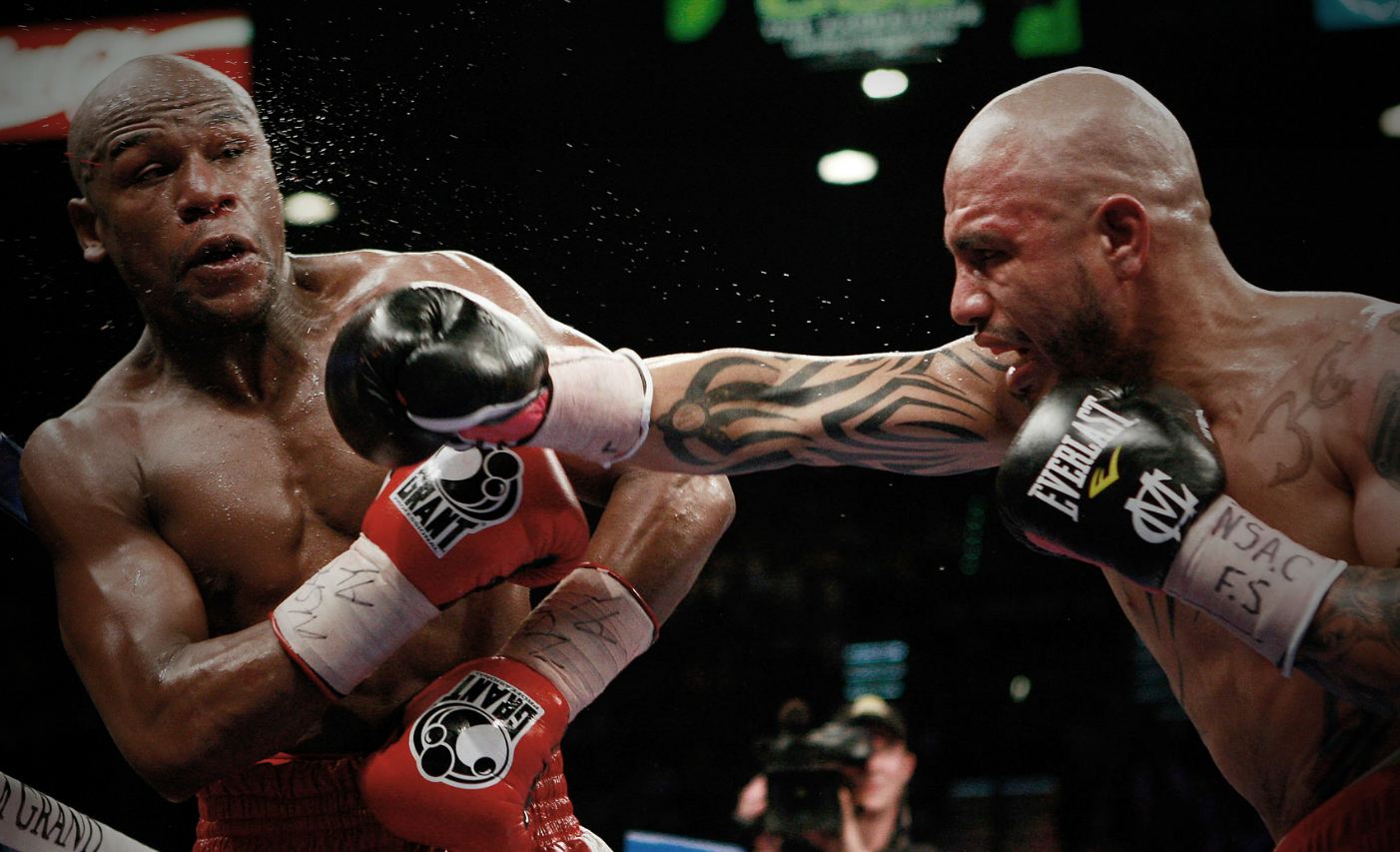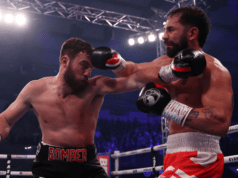A Confident Cotto Performed to His Best Against Floyd Mayweather
In 2009, when Miguel Cotto stepped into the ring to face a then pre-deity level Manny Pacquiao, it was as a man in the midst of a surprisingly turbulent time in his professional career. Coming off of the high of major victories over Zab Judah and Shane Moseley in 2006, and the devastating low surrounding his controversial loss to Antonio Margarito in 2008, Cotto was suddenly a more pensive fighter than had been trademark until that point of his career. And, really, who could blame him?
Three years later, the humility remains, but Miguel Cotto could hardly be considered the same fighter. The Cotto we saw fall to arguably the best fighter going today in Floyd Mayweather Jr. —and I’m being swayed to the dark side more and more each day— is not the same who suffered defeat at the hands of the other best fighter going today, Pacquiao, in 2009.

Saturday night, we saw a dejected, angry Miguel Cotto walk away from the ring after all three judges, and popular sentiment, awarded a well-deserved, fair victory to his opponent. We may have also witnessed a man, defeated physically and emotionally, who left Las Vegas a better fighter than when he arrived.
From the opening bell in 2009, Cotto followed what would seem, at the time, to be the most effective, almost textbook, approach of fighting a Manny Pacquiao. Specifically, he sought to take his shots when they arose—which wasn’t often—and contain the explosively fast Filipino as much as possible. Nothing exceptional in that game plan.
His offense was, in a word, sturdy; there wasn’t much give to his attack and, at times, it seemed as if you could see him thinking through a situation rather than relying on his training. Cotto was fighting for the long haul; seemingly willing to take his chances with the judges were the bout to go the full twelve rounds.
—-> View our entire collection of Mayweather vs. Cotto photos
Make no mistake, Cotto fought a good fight against Pacquiao, though a post match review of the judges’ cards indicate that he would’ve suffered the same fate then as he did this past Saturday night in the MGM Grand Arena. Physically, he was as prepared as he possibly could’ve been at that point in his career. The truth of the matter was and remains: Cotto was simply outclassed versus Pacquiao.
He took way too much punishment throughout the first eleven rounds and containment was, as is the case with Manny, virtually impossible. Had he not taken the beating he did, and were he able to come close to matching foot speed, Cotto may have fared better against Pacquiao. In related news, had I picked all the correct Powerball numbers, I would’ve been a millionaire.
So, what are the differences between the 2009 Miguel Cotto who saw the twelfth round—albeit briefly— and the 2012 version who, despite once again leaving the ring with the capital “L” next to his name, finished the fight on his feet against a more skilled, pound-for-pound caliber fighter?
First and foremost, for as great as both Pacquiao and Mayweather are, a wise man once told me that “style make fights” and Cotto could not have faced two more fundamentally different fighters than these two. Both are incredibly fast, and what Mayweather may cede in foot speed to Pacquiao, he makes up for in punching precision and strength. Where Floyd allows the action to come to him at times, choosing to allow his opponent’s mistake be his next opportunity, Pacquiao is a master at creating openings and taking the fight to his man.
Clearly, these assessments were not lost on camp Cotto heading into both fights and he tailored his approaches accordingly, although his ability to adjust on the fly in the Mayweather fight is likely what allowed him to go the distance and stay off his posterior. He limited the punishment he took and showed little tentativeness in attacking, this time around. Obviously, Cotto knew his opponent, but this time around he fought with more confidence. The man that gave Mayweather the toughest fight of his pro career knew he belonged in that ring on that big a stage.
Secondly—and hear me out on this one—I would argue that Cotto’s experience (his third time) on the beautifully done “24/7” series provided a huge boost to the former champ and thrust him into the spotlight in a way that previous installments had not. It’s impossible to cast him in any more of a “good guy” role as was the case in the lead-up to the Margarito fight, even though “Money” made for the perfect villain. In this case, we weren’t seeing up-and-comer Cotto, as we did prior to the Pacquiao fight. Nor were we getting a peek into the camp of a vengeance-driven Miguel, as was the case with Margarito.
“24/7” showed a confident, mature Cotto in a light that made the guy easy to pull for, a point that was not at all lost on both camps. As humble as they come, it had to be extremely satisfying for Cotto to receive the level of recognition, as a prohibitive underdog, that he received.
Finally, what makes this Miguel Cotto, even in loss, seem superior to his former self is simply that in a sport full of anomalies, he’s proving to be one of the biggest. There has been a ton of expectation and pressure heaped on his shoulders over the past decade and, rather than take the easy road to an undefeated record, he’s built a very nice career filled with challenges and, yes, at times setbacks.
Where Cotto previously survived on grit and natural ability, he’s now supplementing with ring acumen and maturity. That’s the sign of a great fighter, which is a moniker 2012 Miguel Cotto has now earned the right to be called, if he didn’t have it before.











